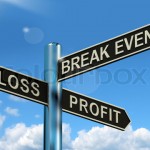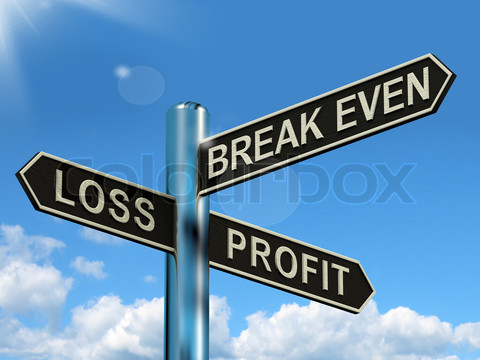18 Sep 2011
Is Bottled Water Making You Stupid?
Bottled water is THE most profitable drink product in the world, selling for 3000 to 9000 times what you pay for the perfectly safe, inexpensive liquid that comes out of your tap at home.
To put this in context, paying $2.40-3.90 for a 750ml bottle of water is equivalent to:
• $10,000 for a tuna sandwich at your local cafe or
• A bill from your water company this month for $3000/tonne of water (as opposed to the going rate of $1.2/tonne)
According to the Australasian Bottled Water Institute, Australians consume over 250 million litres a year at a price of $385 million. We have been systematically brainwashed by the beverage industry to believe that our tap water is somehow unsafe or insufficient – look around and you will see that there are now hundreds of brands competing for your attention with clever marketing campaigns designed to scare, seduce and mislead you to part with your hard earned money.
Despite its association with prestige, purity and pristine conditions, bottled water is often no better than tap water (in terms of taste and cleanliness) and the production process it is extremely harmful to our environment.
Did you know that:
• For every 250 million litres of bottled water, it takes 125million litres of oil to produce the plastic bottles, refrigerate and ship them from one part of the world to another
• For every litre of bottled water sold, another 2 litres are used up in the production process
• More than ½ of the brands on the market are derived from municipal water supplies, despite the fact that the packaging would lead us to believe they come from unspoiled mountain streams or underground springs
• Over 80% of the bottles end up in landfills and are never recycled
It is estimated that bottled water has become a more than $45 billion dollar industry worldwide. Surprisingly, 97% of it is consumed in countries which have plentiful sources of clean, safe drinking water. We can afford to turn our noses up, avoid the tap and fork out millions for bottled water: our choice however is purely a lifestyle one. A lifestyle choice for us with life and death consequences for others and our planet.
For 2.6 billion people in the developing world, lack of clean water and basic sanitation is a life or death situation. It is estimated that half of the people in the developing world are suffering from diseases associated with inadequate water or sanitation and that 5 million people die each year. According to the International Water Management Institute, clean water and improved sanitation could be provided to everyone on earth for an outlay of $11 billion a year (less than a quarter of our global $45 million spending on bottled water), yet to date, there has been no impetus to re-channel the money and change our thinking on this important issue.
So you may be sitting there and thinking, what does this mean for YOU and your business?
Well, nothing… and yet perhaps, everything.
How often have you (or someone else in your team) said:
• “if we had more money, we could invest in X and improve our business?”
• “if we put our prices up by 10%, we will lose customers.” or
• “we can’t afford to buy X because it’s too expensive.”
You already have enough money to do and buy all of the things that you need – it’s simply a matter of common sense and priorities. We are all affluent in this country: It is your mindset and your language which is lacking, not your bank account.
In fact, each and every day you and I waste money by overpaying for bottled water and other convenience/impulse items. We rarely stop to think about the true value of what we got vs. what we paid. Bottled water is just one obvious example and it is not difficult to see how this might be playing out in other areas of our lives.
You and I have happily overpaid for products. Yet we struggle to charge what we are worth or put our prices up because we fear that no one will buy. Isn’t that interesting?
Perhaps you and I need to take a lesson from the bottled beverage industry and focus on how we are marketing and selling our products/services? Is fear more powerful than selling benefits? Is perception more influential than reality? Are you seducing your customers with sizzle or merely putting them to sleep with your low prices?
Think about it. Beverage companies have managed to package and sell to us something that is practically free and plentifully abundant, for thousands of times what it is worth. And up until now, we have all paid willingly. Bottled water has in fact made us all look a bit foolish.
Maybe it’s not the price you are charging that is the problem? It’s the way you are choosing to promote your product/service. The best time to change your mindset and your approach is now. Anything is possible.
Article Source: http://EzineArticles.com/4936397
08 Jun 2011
Did Walmart Get it Wrong?
For those of you who are in the retail industry, you may have noticed a recent trend to clean up in-store environments – reduce shelf heights, remove dense ends and dump bins, widen aisles etc. – in order to increase comfort and make the shopping experience less stressful for customers.
The big question then becomes “does clean make customers keen? According to Walmart, arguably the largest and most successful retailer in the world, clean stores mean fewer beans (on the bottom line).
As reported in the New York Times, Walmart conducted a massive in-store experiment to improve sight-lines, rationalize the overall number of items offered, remove warehouse-like merchandising in centre aisles, and increase the width of core aisles. According to Walmart’s CEO William S. Simon, “(Customers) loved the experience. They just bought less.”
As a result, Walmart reverted back to its original strategy of offering more products, with tighter aisles, more clutter and lots of bargain bins in the hopes that customers would spend more because of a perception “there were bargains to be had”.
If you do a quick search on the internet, there are dozens of experts who subscribe to the view that a larger selection, more bargain bins, and sales signage equates to “better value”. In essence, the more you look like a market stall, the better it is to generate buzz and sales. They argue that if your merchandise is neatly presented on the walls and in well organized aisles, with no point of sale impulse offers and dense ends full of 2-for-1 specials, customers will tend to think your store is expensive (i.e. overpriced) and they will not buy from you.
And if you think about it, you can probably name a whole list of retailers who subscribe to this “clutter is good for business” philosophy and they seem to be successful. But how can we be sure that clutter makes customers keen? Have we been too quick and prematurely jumped to a conclusion that clean is a traffic and transaction turn-off?
Recent empirical evidence from the science of neurology sheds new light on how we think, and more importantly, how we make decisions. In fact, the decision making part of your brain responds strongly to certain stimuli only.
Did you know that your brain consumes 25% of your body’s energy? As a result, you brain wants to conserve energy so you tend to pay attention and be attracted to things that have sharp contrast, high visual appeal, strong emotional cues and a clear beginning vs. end message.
Now what does this mean for you in the context of your shopping environment?
A chaotic, cluttered store is cumbersome for your brain to navigate – you have to work hard mentally to hunt down and search for bargains. It may create some emotional appeal but it is likely perceived as having low contrast, low visual appeal and no clear beginning vs. end. Shopping in this environment takes time and energy and it also forces your brain to go into “thinking” mode. This is a critical point because thinking is counter-productive to deciding. Thinking takes place in one part of your brain (the neo-cortex), while deciding happens much more quickly (and automatically) in your old or “reptilian” brain.
So what does this research mean for the strategy and conclusions reached by Walmart?
Based on science, the strongest buying cue that you can give your customers is this – if your store (or business) has incredible bargains, people will buy (and even sift through a maze of clutter) because something is in it for them. The “what’s in it for me” (WIFM) principle is one of the strongest influences on the part of your brain that decides.
There is no hard evidence to suggest that clutter makes your customers keen.
Walmart and many others have come to a conclusion based on what they THINK people are doing to reach a buying decision in-store. However, neuroscience has empirical evidence to support the opposite conclusion is more probable. Clutter and chaos create an environment where your customers have to think too hard, which is exhausting for the brain. They will do it if they have to, as long as the perceived bargains and value are very high.
Doesn’t it make more sense to find another way to communicate good value and service without exhausting your customers and causing them to waste their time? Wouldn’t you be more likely to get more sales and word of mouth referrals from your delighted customers?
In the end, Walmart may be correct about the fact people buy more in a certain circumstances but they are wrong about WHY that is. The best way to create more excitement and sales is to make it easier for your customers to decide. You need to show them what’s in it for them, increase the contrast between your solution and your competitors and communicate a strong, clean visual message that compels them to say “YES”.
That’s The Good News, Now Do You Want To Hear The Bad News?
If you do a quick search on the internet, you will uncover hundreds of experts, coaches, accountants, journalists and government organizations that quote the statistic “8 out of 10 business fail in the first year”. However, the fact that the statistic is widely touted doesn’t necessarily mean that it’s true or backed up by empirical evidence.
So what is the truth? I searched the internet and couldn’t find confirmation of any study that was done to back-up this statistic (that 8 out of 10 businesses fail) by a reputable or well-known bureau. What I did in fact find was some evidence to the contrary. According to credit reference checking agency Veda Advantage, only a small percentage of new businesses close in their first 12-months of business.
What is the exact amount, you ask? Would you believe, less than two percent?
However, they assert another 32 percent close their doors between their second and fifth year of operations, while 21 percent wind up between the sixth and ninth.
So, that is the good news. However, as you can probably guess, it’s not ALL good news.
Just because a start-up doesn’t go under in the first 12 months, doesn’t mean that the owner is running a successful enterprise. I wonder if anyone has bothered to measure how many of the businesses who survived:
- Paid the owner a wage that was at least equivalent to what he/she could have earned elsewhere as an employee?
- Generated a profit and positive cash flow? and
- Had enough working capital to service their debt, pay taxes and suppliers etc. as they came due?
The first few years of business are incredibly risky. In working with hundreds of business owners, we have found that the large majority opt to forgo their salary or inject more equity to prevent them from going under prematurely. What this means is that, while they may not have “technically” gone under, these fledgling enterprises are far from commercially viable and successful.
Statistics can be both helpful and misleading at the same time. It is easy to assert figures but more difficult to substantiate their veracity or explain the implications thereof.
The author of an article or press release will often use statistics to capture your attention and motivate action. That’s why people use statistics – numbers are persuasive and have an aura of authority. A statistic like – 8 out of 10 businesses fail – gets attention, doesn’t it? Whether this data is accurate or not, is only half the story. As a business owner or manager, we must look deeper to find the insights that we can take away and use to improve our results.
Personally, I don’t care what percentage goes under. No matter how long you’ve been operating, if you’re not getting paid a salary, producing profit and generating positive cash flow, you’re not running a successful company. Closing your doors is only half the story. The doors may very well be wide open, but technically, no one is there.

Rhondalynn Korolak, Author of Financial Foreplay® and On The Shoulders of Giants
Discipline and attention to details is more important than ever if you want to succeed in challenging economic times. Take a look around… competitors are closing their doors – which means more potential customers for the businesses that DO survive. And in times like these, it’s going to take more than “thinking outside the box” and goodwill with existing customers to secure the survival of your business.
You may have been lucky over the past few years – you may have found it possible to operate without a detailed, written plan and systems/processes. But the global economic crisis has changed all of that. If you want to thrive, there is only one thing that is for sure – uncertain times call for deliberate decisions and proven practices.
So here are & top tactics to recession-proof your business.
Read More
16 Feb 2011
Breaking Up is Hard to Do…

Rhondalynn Korolak, Author of Financial Foreplay® and On The Shoulders of Giants
The restaurants and promenades in the Docklands (Melbourne) were packed on Monday, night with couples. It was after all Valentine’s Day – the day when everyone declares their undying love for each other… well, at least their “commercial love”.
Apparently, if NAB has anything to do with it, February 15th is now the official day of the year to break off a bad relationship – the “unValentines Day”. I wonder how long it will take for chocolatiers, greeting card companies and florists to create some products to commemorate this special occasion?
The obvious question that no one seems to be asking is “why was the NAB dating both the ANZ and CBA in the first place?”










